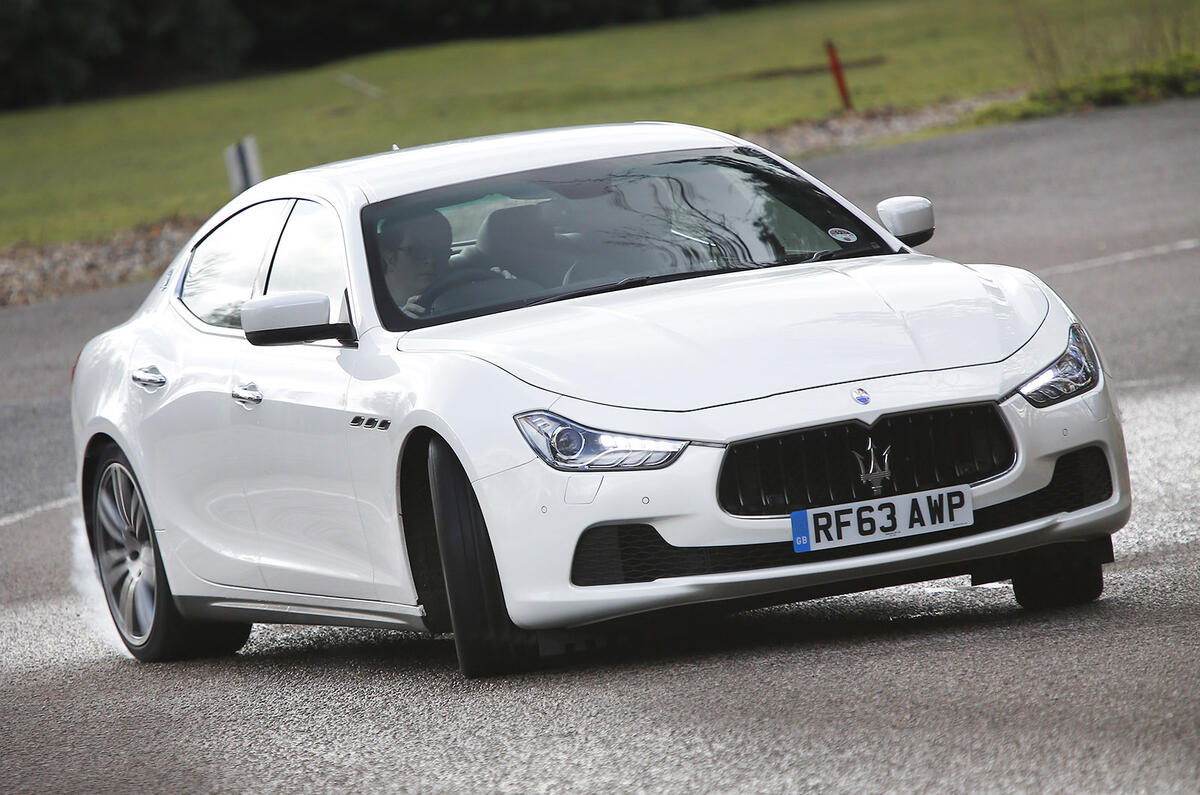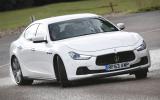The Ghibli offers three engines and two drivelines, the range beginning with a rear-drive 3.0-litre petrol twin-turbo V6 developing 345bhp.
Above that sits the Ghibli S with the same 404bhp twin-turbo version of the V6 recently debuted in the Maserati Maserati Quattroporte, this engine available either with rear or four-wheel drive, although the latter, disappointingly, will not be available in the UK.
The most unusual offering, in a Maserati context, is a 271bhp 3.0 V6 turbodiesel that’s an essential weapon if the Modenese marque is to boost its sales from well under 10,000 units to 50,000.
All Ghiblis come with an eight-speed paddle-shift ZF transmission, multi-link rear suspension and double wishbones up front, Maserati’s electronically controlled Skyhook dampers, a limited-slip differential, Brembo brakes and hydraulically assisted steering. And all benefit from 50 percent front, 50 percent rear weight distribution, a model-for-model kerb weight 50kg lighter than a Quattroporte and a 0.31 drag coefficient.
We know the V6 in the larger Quattroporte performs in a spirited, smooth and characterful fashion. In the Ghibli, it should prove a sensible and rewarding option.
‘Adequate’ is not a word you want to hear in any description of a Maserati, but there seems none better to describe the performance of the diesel Ghibli in both subjective and objective terms.


























































